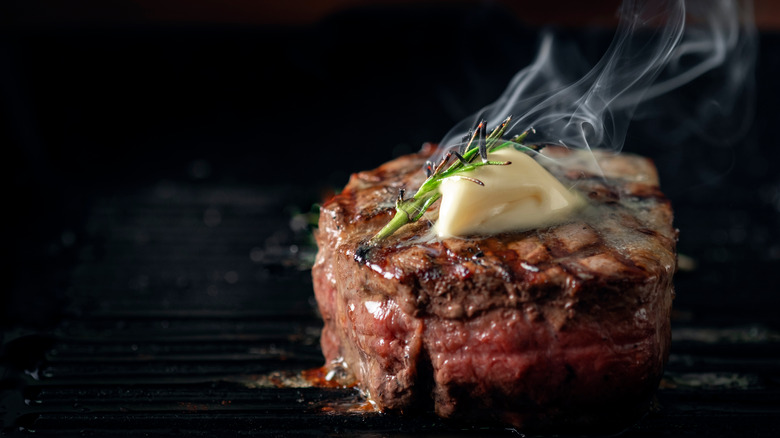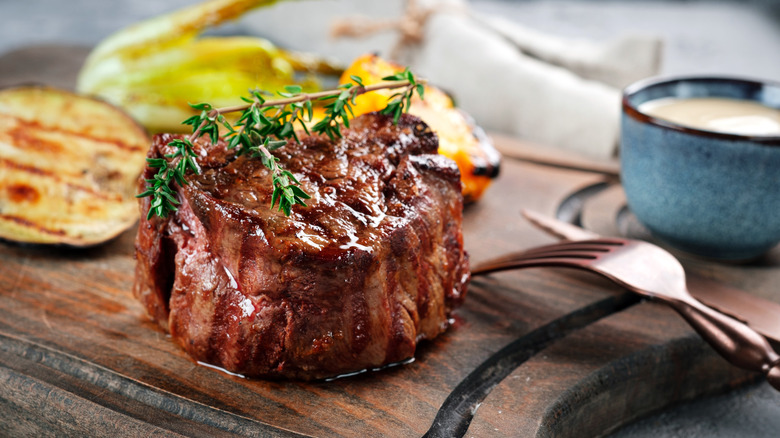Why You Should Think Twice About Ordering Tenderloin At A Steakhouse
Over the decades, beef consumption in the United States has declined, from a peak of 89 pounds per person annually in the 1970s to just 58 pounds per person in 2019 (via Eater). But those of us who still enjoy cutting into a rare piece of meat cherish the very American tradition of the steakhouse — those temples devoted to aged beef, shrimp cocktails, and vegetable sides.
If you've ever eaten in a steakhouse, you know that the menus can be surprisingly long, offering not only dry-aged steaks, wet-aged steaks, and a multitude of different cuts of steak ranging from New York strip to porterhouse to ribeye. So even if you love beef, it can be confusing knowing which cut of meat to order — and why. Of course, there are many good choices available at the average steakhouse, but there's one standard cut you'll find on most menus that you might want to avoid: the tenderloin — also known by its Frenchified name filet mignon. But pricey filet mignon is supposed to be where it's at, right? Not always.
Beef tenderloin is lean and can dry out quickly
If you've ever purchased a steak at your local butcher shop, then you probably know that beef tenderloin, often called filet mignon, is usually one of the most sought-after cuts of beef. According to The Spruce Eats, this is a fact that is often reflected in its high price per pound. And it's true. As its name implies, tenderloin is an incredibly tender cut of meat — severed from right under the backbone of the cow. This is a part of the animal that typically doesn't move a whole lot, and as such won't get very tough and muscly.
Here's the thing — beef tenderloin is one of the leanest steaks available, coming in at less than 7 grams of fat per serving, according to Certified Angus Beef. And when it comes to meat, fat equals flavor. So although the texture of filet mignon might be more pleasing, it definitely registers lower on big beefy flavor than other, fattier cuts of meat you'll find on steakhouse menus. For example, fattier cuts such as a well-marbled ribeye or a juicy New York strip contain more flavor (via Cattlemen's Steakhouse).
We're not the first ones to be underwhelmed by beef tenderloin. It's a cut that is widely dismissed by many chefs. "It is the most expensive cut in the entire steer and tends to have no fat, poor texture, and little flavor," Michael Symon told Thrillist.

